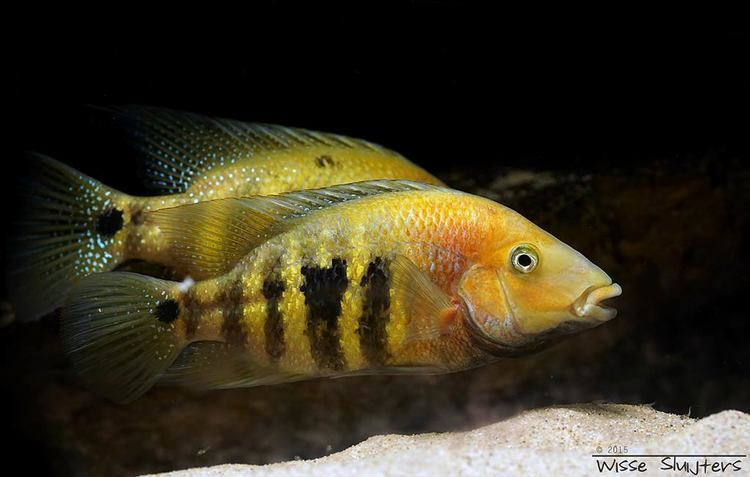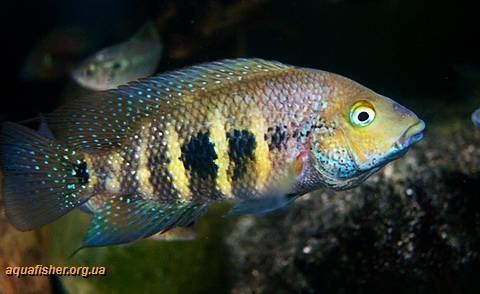Subfamily Cichlinae Phylum Chordata Rank Genus | Scientific name Theraps Higher classification Cichlid Order Perciformes | |
 | ||
Similar Cichlid, Paraneetroplus, Tomocichla, Vieja, Herichthys | ||
Theraps is a genus from the cichlidae family. It is found in Atlantic slope rivers of Mexico, Belize, and Guatemala, to lowland tributaries of the Río Motagua drainage in Honduras.
Contents

Species
There are currently 5 recognized species in this genus:

Aquarium Keeping

Theraps species are very territorial and aggressive towards others, especially during breeding. They may be kept in the same aquarium with other robust cichlids and catfish with varying success. For breeding or maintaining multiple specimens, a tank of 100 US gallons (380 L) or larger is recommended. Depending on fish size, a single specimen may be kept in a tank of 20 to 40 US gallons (76 to 151 L).

Omnivorous feeders, they eat a wide variety of insects, crustaceans, small fish, worms, algae, and plant material. As with many other cichlids, they may dig out or chew up aquarium plants. In aquaria prepared flake and pellet foods as well as frozen or live invertebrates will be readily consumed. Theraps sp. should also be offered a variety of steamed or boiled vegetables, such as peas, spinach, zucchini, lima beans, or brussels sprouts.

Theraps species lay several hundred eggs on flat stones, or in a pit in the sand or gravel. Mature adults are very attentive parents and may injure or kill other fish when guarding the young (fry). Males are often more colorful and generally larger than females, and may develop a hump on the head as they age. Captive breeding is not too difficult to achieve; live foods, frequent water changes, and a temperature increase or decrease of 2 to 4 degrees encourages spawning. Several artificial or rock caves for fish to hide from each other are advisable.
